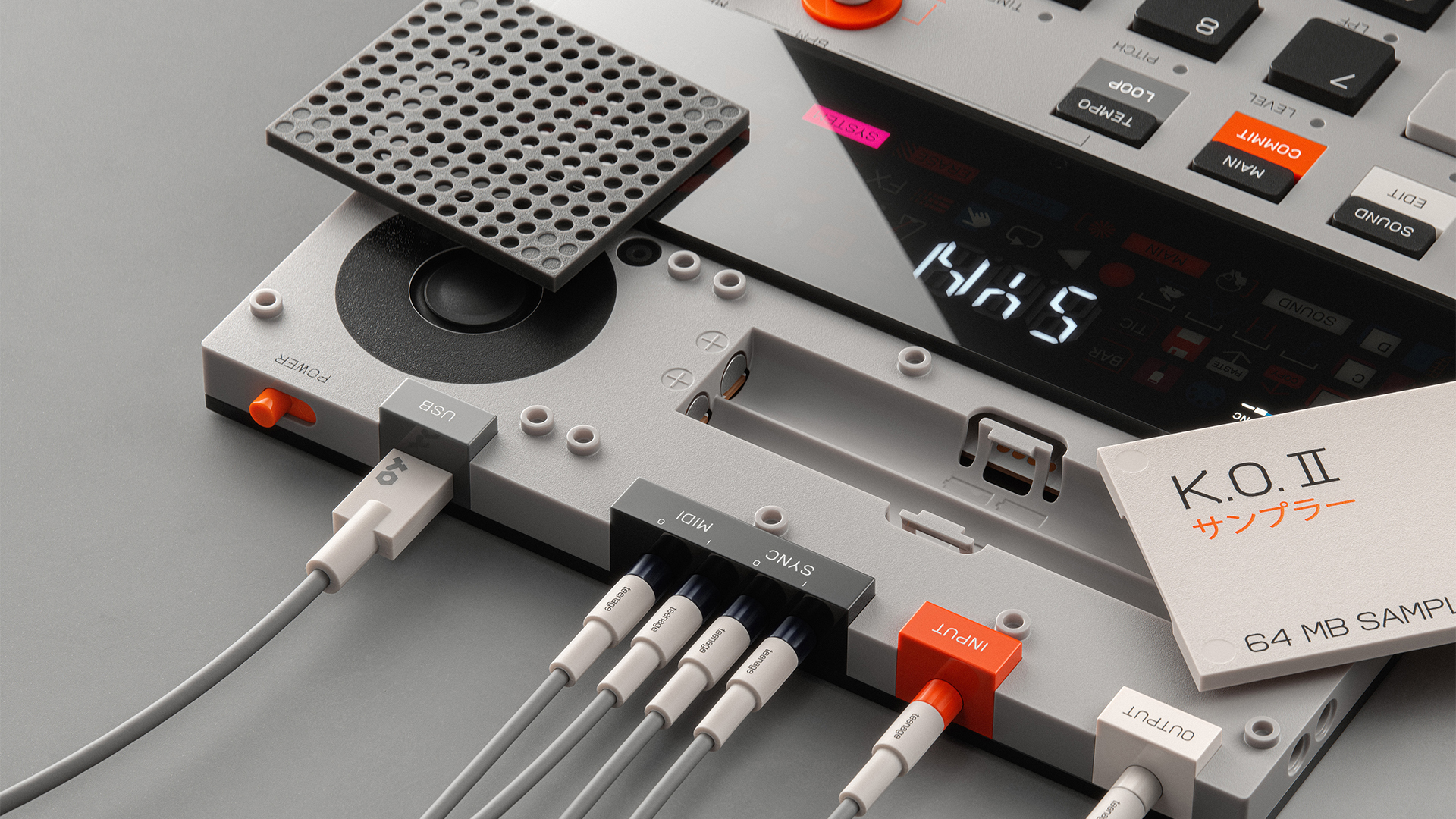

Teenage Engineering doesn't follow any trends, nor does it release product like any other tech company on the planet.
Aside from Nothing, which Teenage Engineering has helped shape a chunk of its product line-up, there are very few who can claim to inhabit such an idiosyncratic design, audio and analogue electronics space.
Its latest product is the EP–133 K.O. II, which takes a lot of inspiration from its Pocket Operator series of miniature samplers and beat makers, but adds in a whole host of functionality that catapults it into the serious sampler and synthesiser stratosphere.
Despite looking like a giant calculator from the 1980s, the K.O. II is a 64mb sampler, sequencer and composer that looks set to be every bedroom producer's dream device.
Featuring a built-in microphone, as well as inputs for MIDI instruments and external mics, it's possible to record a slew of samples from numerous devices, and then map them to the 999 available slots.

From here, it's a case of harnessing your inner Fred Again and going wild with the pads, building up tunes over four distinct timelines (marked A to B).
If you’re not a whizz on the MIDI keyboard, you can always select from the hundreds of built-in snares, kicks, hi-hats, bleeps, bloops and melodic stabs.
Get all the latest news, reviews, deals and buying guides on gorgeous tech, home and active products from the T3 experts
Although the Pocket Operator is designed as a bit of fun, offering a platform to create little beats on the go, Teenage Engineering says it has developed the EP–133 K.O. II with enough memory for wannabe producers to compile complete songs.
There are six built-in master effects, which can be applied to any of the recording inputs, while 12 punch-in effects allow burgeoning knob-twiddlers to effectively perform live and add loops, sweeps, ramps and echoes for that full fat Aphex Twin experience.

It delivers so much more, too, with the ability to chop up a sample and map it to numerous buttons, adjust pitch, quantise off-beat beats and assign any pad to one of 16 MIDI channels, effectively expanding the talents of your MIDI instrument of choice. Punch "Teenage Engineering EP–133 K.O. II" into YouTube and lose many hours watching talented folk get creative with the thing.
Naturally, the K.O. II is a also gorgeous piece of design, featuring pressure sensitive keys, a multifunctional fader and brilliantly tactile buttons and knobs that sit there just begging to be bashed and tweaked in a rhythmical manner.
Better still, it is powered by four AAA batteries for beat-making on the bus, or it can be plugged into a power supply thanks to a USB-C cable. It even comes in a limited edition 10-inch collector’s box that’s fashioned to look like some vintage vinyl. Nice touch.
Like Teenage Engineering’s OB-4 radio / loudspeaker / mad box of audio tricks, there’s somewhat of a cult following around the EP–133 K.O. II, with units regularly selling out.
When it is in stock, it costs £299 / $299 / AUS$549. But be quick, because if your name's not down, you're not coming in.
Leon has been writing about automotive and consumer tech for longer than he cares to divulge. When he’s not testing the latest fitness wearable and action camera, he’s out in a shed fawning over his motorcycles or trying not to kill himself on a mountain bike/surfboard/other extreme thing. He's also a man who knows his tools, and he's provided much of T3's drills coverage over the years, all without injuring himself.
